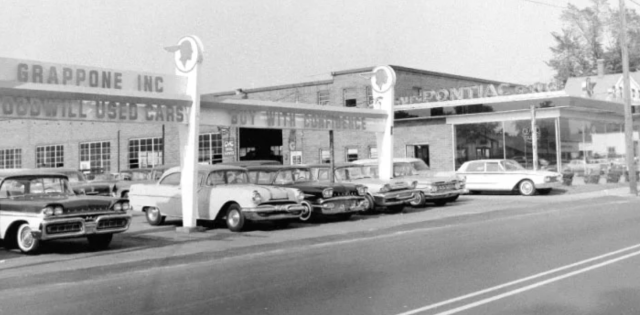Is it time to stay, hit or double down? How will you decide? Which path will be right for you, your family and your generational impact within your community?
The U.S. auto-retail market is highly fragmented with more than 80% of dealerships owned by individuals or small groups. Of the 97 franchises that transacted in a buy/sell arrangement during the first quarter of 2019, 95% were conducted by private buyers.
We see it every week in the makeup of students enrolled at the National Automobile Dealers Association (NADA) Academy. What used to be a program attended by 90% dealers and successors, today includes professional managers from growing private and public dealership groups who make up more than 50% of the students.
For single point stores that are considering becoming a small group or small groups that want to grow by acquisition to a larger group, there are three main factors to consider:
Consideration #1: What am I purchasing?
When acquiring a dealership, you must consider what exactly you are purchasing. Are you purchasing the intangible assets and/or the tangible assets? Is there a requirement to purchase any of these assets? Are you assuming any liabilities? The most common assets in consideration are the land and the buildings. However, there are other liabilities, intangible and tangible assets that can be negotiated to include or exclude. For example, these assets include the dealership’s brand name, online and dealership reputation, workforce, inventories, outstanding vendor contracts, receivables and OEM tools and signs, to name a few.
Consideration #2: How is the acquisition target performing and is it reasonable to believe that if acquired the performance is expected to change?
Any metric by itself does not mean a lot, but when compared to industry guides, manufacturer specific metrics and performance trends, it can start to tell a story. The first part of the analysis is math. These metrics include but are not limited to sales effectiveness, used car sales market share, service proficiency, parts-to-customer pay labor ratio, absorption and employee efficiency. This will identify strengths and weaknesses within the current operation.
The second part of this analysis is to set reasonable targets and timelines to improve the identified deficient metrics. Never forget that you are managing from the sky box when doing a valuation and it is much more difficult on the field. The changes you intend to make can have effects throughout the entire organization. This is precisely why it is essential to follow up the mathematical analysis with qualitative research with the current management team to determine any actionable items to address when acquiring the store.
Consideration #3: Do I have what is necessary to get approved?
Once you have agreed to a transaction price your job has just begun because the steps to financing and OEM approval can be time consuming. Before doing the operational analysis and entering into an agreement, it is important to understand your buying power and what steps are necessary to get OEM approval. Some common bumps in the road are restating financial statements for LIFO and rent factors, facility requirements and local government regulations.
So, in this highly fragmented auto-retail market are you going to stay, hit or double down?
Confusion in the industry – from technological disruptions and other factors – is real. Dealers who do not have a reliable method to evaluate their existing store or other stores they want to acquire are truly going to be stuck in “analysis paralysis.” Dealers need to develop their own vision for growing the business or selling it.
Still not sure? NADA is offering a new course, Dealership Buy, Sell or Hold, from Oct. 22-23, 2019 in Tysons, Va., that can help dealership owners make informed decisions. Participants will leave with an understanding of the buy/sell market, a road map to value, acquiring a simulated dealership and learning the realities of getting the house (OEMs) to approve the deal. Click here to register.
Lucki combines his financial background as a certified public accountant, variable operations expert at six dealerships and a business owner to teach variable operations classes at the NADA Academy. As a NADA Academy graduate and current instructor, Lucki’s passion is for his students to understand the influence and responsibility they have as dealership operators. Vollmers brings 35 years of automotive-related experience to the NADA Academy. He worked as the general manager of three separate franchises at two dealership locations simultaneously and has extensive OEM experience in certified pre-owned, fixed and variable operations. His experience in retail and wholesale operations provides a strong base of skill sets to help dealers better understand their challenges. Vollmers is a NADA Academy graduate.











